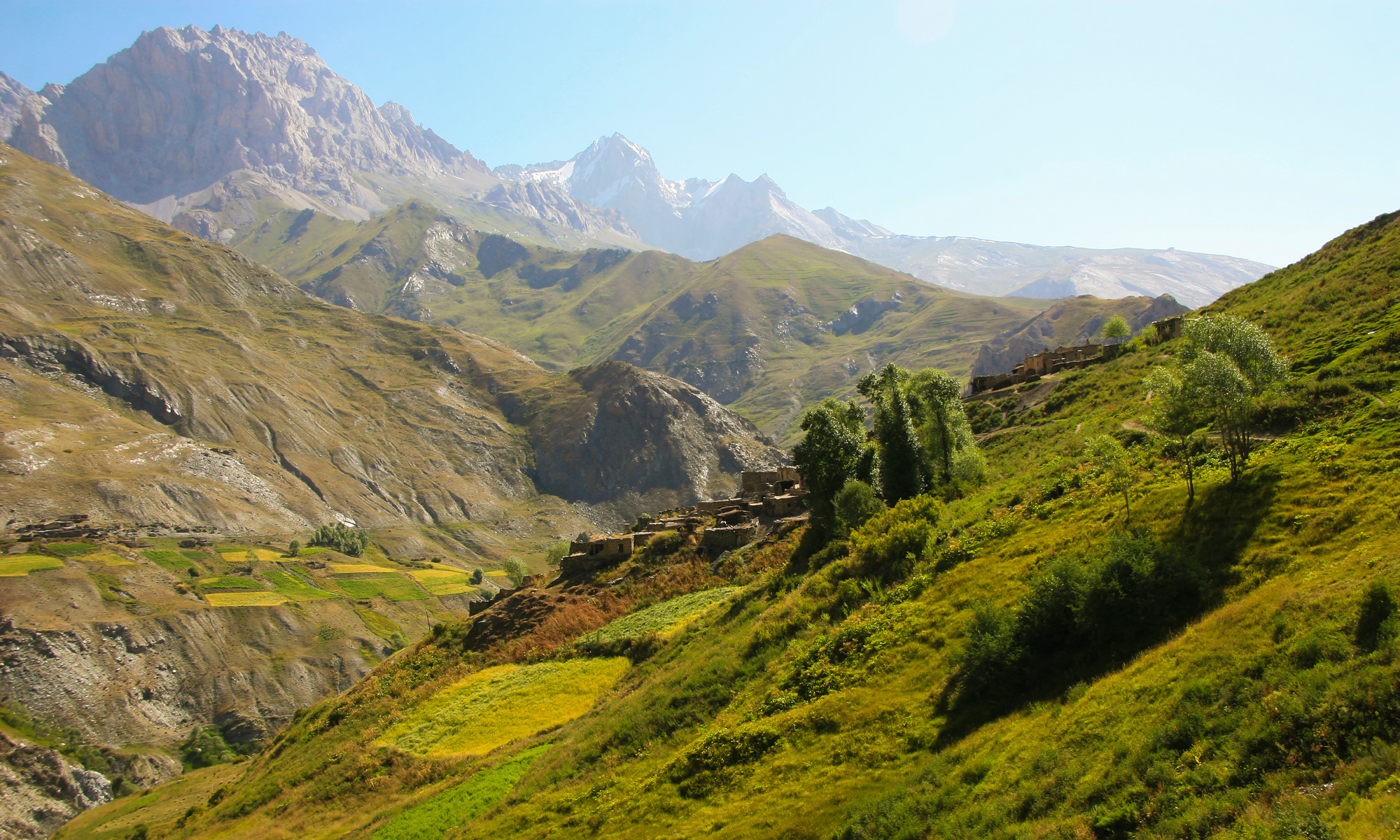Unlike formal religious language passed down through scriptural texts, the sacred in Yaghnobi speech is shaped by intimacy and landscape. It draws from Islamic vocabulary, ancient tradition, and local idioms. What emerges is a verbal world where certain words are not only meaningful—they’re powerful.
The folktale of Hojai Buzurgvor offers a window into how saintly figures are addressed and spoken about. The name itself—Hojai, or “the great pilgrim”—carries weight. It is never used lightly. In the tale, the figure is not only respected but feared. People speak of him in indirect ways, avoiding casual mention. This is a common trait in Yaghnobi sacred language: naming can be a form of invocation, so names are handled with care.
In speech, blessings and oaths are often structured in formulaic ways. One might say Худо нигаҳбонат бошад—“May God protect you”—or Ба номи Худо—“In the name of God,” before beginning a task or journey. These expressions are not unique to Yaghnobi, but their use in the local dialect often blends Tajik and Arabic forms with distinct pronunciation, rhythm, and placement. For example, in more isolated villages, one might hear older forms of sacred verbs—praying, thanking, hoping—preserved in speech patterns different from the plains.
Swearing an oath is another form of sacred language. In older narratives and reported speech, people often swear not by themselves, but by saints or natural symbols tied to the divine. A person might say, Ба ҳаёти падарқадам савганд—“I swear on the life of my ancestor.” Or even more solemnly, Ба номи Ҳоҷаи Бузургвор қасам мехӯрам—“I swear by the name of the Great Pilgrim.” These are not empty phrases. To swear falsely using sacred language is considered a deep offense—not only socially, but spiritually.
The lexicon includes specific verbs and modifiers associated with sacred action. To pray, to believe, to give thanks—these actions have subtle forms that differ from their secular counterparts. The verb for ordinary speech is not used when someone recites a prayer. The noun for a regular man is not used when describing a saint. There is a linguistic separation between the profane and the sacred, and this boundary is respected in tone, choice of words, and grammar.
There are also protective phrases, used like charms. A child might be blessed with a line such as Аз бад нигоҳ дор!—“Keep [them] from evil!” These phrases function like verbal amulets. They aren’t formal prayers, but habitual sayings passed from elder to child, repeated at thresholds, during storms, or before difficult events.
In many households, even after Soviet-era restrictions on religion, these forms of sacred speech remained. People might not attend mosque regularly or have religious texts, but they still swore carefully. They still invoked the names of ancestors or saints. And they still used sacred verbs when telling stories of miracles, protection, or unexplained events.
This distinction—between the everyday and the holy—extends even to how certain places are named. A spring associated with healing, a ruined shrine, a grove where people once gathered to pray—these locations are not described in ordinary terms. They are introduced with honorifics or with the softening effect of indirect speech. Instead of saying directly “This is where the saint stood,” someone might say, “They say he passed here once,” or “It is believed this was his place.” The language itself bends to show reverence.
What emerges is a verbal culture that encodes sacredness not in grand theological terms, but in rhythm, hesitation, and tone. It’s in the avoidance of certain words, the repetition of others, and the respect given not just to what is said, but how it is said.
